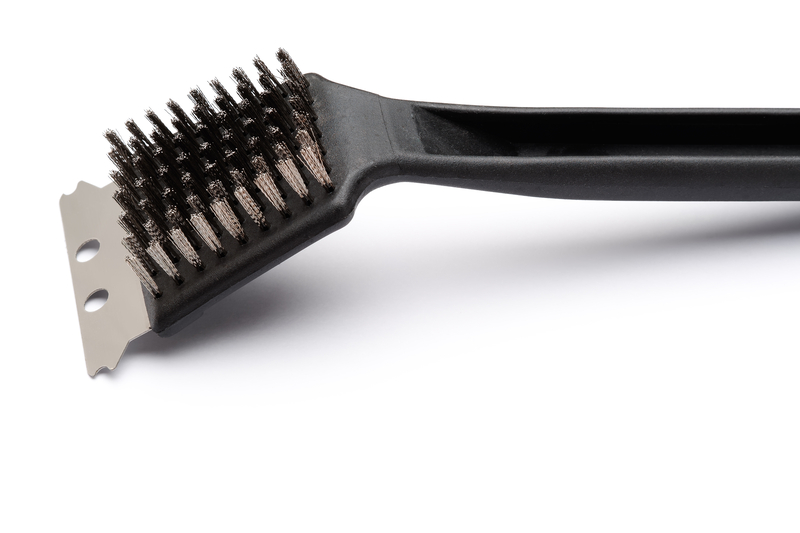Learn the Essentials of Proper Curtain Care
Posted on 11/06/2025
Learn the Essentials of Proper Curtain Care
Discover everything you need to know about maintaining beautiful, fresh, and long-lasting curtains for your home. Proper curtain care can save you money, improve your indoor environment, and enhance the look of any room.

Why Proper Curtain Care Matters
Many homeowners underestimate the importance of caring for curtains. Curtains are exposed to dust, sunlight, odors, and stains on a daily basis. Over time, this exposure can wear out fabrics, cause fading, and even harbor allergens. Learning how to clean and protect your curtains not only keeps them looking new but also extends their lifespan, saving you the cost and inconvenience of frequent replacements.
Benefits of Good Curtain Maintenance
- Enhanced appearance - Clean, well-maintained curtains instantly lift the mood of any room.
- Improved indoor air quality - Regular cleaning removes dust, mold spores, and allergens.
- Prolonged fabric life - Avoid premature fading and fiber breakdown.
- Cost-efficiency - Extend the replacement cycle for your window treatments.
Understanding Curtain Materials
The way you clean and care for your curtains depends on their fabric composition. Before embarking on any maintenance routine, identify the material of your curtains. Here are some common curtain fabrics and their care requirements:
- Cotton Curtains: Durable and washable, cotton curtains can usually be machine-washed, but may shrink if not pre-treated.
- Linen Curtains: Require gentle handling due to their tendency to wrinkle and shrink; often recommend hand-washing or dry-cleaning.
- Velvet Curtains: Luxurious and heavy, they attract dust and often require professional cleaning.
- Silk Curtains: Delicate and prone to sun damage, silk is best cared for with gentle dry-cleaning and minimal handling.
- Synthetic Fabrics (polyester, nylon): These are often the easiest to maintain, generally being machine-washable and resistant to wrinkles and shrinking.
- Blended Fabrics: Combination materials will have specific instructions, so always check the manufacturer's label.
The Essentials of Day-to-Day Curtain Care
Regular Dusting and Vacuuming
Dust is the biggest enemy of curtain fabrics. Letting it accumulate can deteriorate your curtain's appearance and contribute to allergies. Follow these steps to keep dust at bay:
- Use a vacuum with a soft brush attachment for weekly cleaning.
- Work from top to bottom, and pay special attention to folds and hems, where dust often accumulates.
- For delicate fabrics, use a lint roller or soft microfiber cloth instead.
Spot Cleaning for Stains
Accidents happen! Food stains, fingerprints, and pet marks are commonplace. When a stain appears:
- Blot gently with a clean, dry towel - avoid rubbing, which can push the stain further into the fibers.
- Use a mild detergent and water mixture on a hidden area first to check for colorfastness.
- Apply the solution with a soft cloth and gently dab the stain.
- Rinse with a damp cloth and allow to air dry completely before rehanging.
Managing Odors and Refreshing Curtains
Curtains can trap odors from cooking, smoke, or pets. To keep them smelling fresh:
- Spritz lightly with a fabric-safe deodorizer.
- Allow fresh air to circulate by opening windows when possible.
- Consider hanging them briefly outside on a dry, breezy day.
Deep Cleaning: Washing Your Curtains
Checking Manufacturer's Instructions
Always read the care label provided by the manufacturer before washing. This will tell you whether you can machine wash, hand wash, or should only dry clean your curtains.
How to Machine Wash Curtains
Many modern curtains are designed to be machine washable. Here's how to do it right:
- Use a gentle cycle and cold water to prevent shrinking or color fading.
- Remove any hooks, rings, or weights beforehand.
- Wash similar colors together, and avoid overloading the machine.
- Use mild, bleach-free detergent specifically for delicates or gentle fabrics.
- Check periodically and remove immediately after the cycle to prevent deep creasing.
Hand Washing Delicate Curtains
For lace, silk, or other delicate materials, hand washing is safest:
- Fill a basin with cool to lukewarm water and add a small amount of delicate fabric detergent.
- Soak the curtains, gently agitate with your hands, and avoid wringing or twisting the fabric.
- Rinse thoroughly until water runs clear and gently press out excess water.
- Lay the curtains flat on a towel or drying rack away from direct sunlight to prevent fading.
Professional Dry Cleaning
Some curtains, especially those made of velvet, wool, or interlined with unique trims, should always be dry cleaned. Professional services have the proper tools and solvents to clean these materials without risk of damage. When in doubt, choose professional dry cleaning for your most valuable or intricate curtains.
Ironing and Steaming Curtains
Ironing Tips
Many curtains can benefit from light ironing after washing to remove wrinkles. Here's how:
- Iron on the reverse side, using a setting appropriate to the fabric type (check care label).
- For textured or delicate curtains, place a thin cloth between the iron and the fabric.
- Avoid over-pressing--heat can damage fibers and cause shiny marks.
Using a Steamer
Steaming is an effective and gentle way to refresh curtains without direct contact. A handheld garment steamer works well for hanging curtains:
- Hang the curtain and slowly move the steamer from top to bottom.
- Keep some distance; avoid saturating the fabric with steam.
- Allow to dry completely before drawing curtains closed.
Protecting Curtains from Damage
Sunlight Protection
Prolonged exposure to direct sunlight can fade colors and weaken fabric fibers. Protect your curtains by:
- Using sheer shades or blinds during peak sunlight hours.
- Switching to lined or blackout curtains in sunny rooms for extra defense.
- Rotating curtains between rooms periodically for even wear.
Avoiding Mold and Mildew
Damp environments can trigger mold growth on curtain fabrics. To prevent this:
- Ensure windows don't leak or produce condensation onto curtains.
- Open windows or use a fan to keep air circulating in humid weather.
- Wash curtains promptly after any water exposure.
Storing Curtains Properly
When changing curtains seasonally or moving house, it's important to store them correctly:
- Launder and dry thoroughly before folding to prevent mildew.
- Fold neatly and place in breathable cotton bags, not plastic, to allow air circulation.
- Store in a cool, dry place away from direct sunlight and pests.
Special Curtain Types and Their Care
Blackout and Thermal Curtains
These heavy-duty curtains often have a foam or rubber backing. Clean by:
- Vacuuming regularly with a soft brush attachment.
- Spot clean stains gently; avoid soaking or wringing, as water can damage the backing.
- Dry cleaning is safest for deep cleaning.
Sheer and Lace Curtains
Lightweight and see-through, these fabrics need extra care:
- Hand wash or use the gentlest machine cycle with a mesh laundry bag.
- Use cold water and mild detergent.
- Air dry flat to avoid stretching or snagging the fabric.
Decorative Curtains with Embellishments
Beads, embroidery, and sequins can make your curtains stand out--but these elements are delicate. Always:
- Spot clean only unless care label explicitly permits washing.
- Brush dust off with a soft, dry brush.
- If in doubt, consult a professional cleaner experienced with embellishments.
Common Mistakes to Avoid in Curtain Care
Even experienced homemakers can slip up now and then. Here's what NOT to do:
- Ignoring the care label--always check!
- Using bleach or harsh detergents, which can cause fading and fabric breakdown.
- Over-drying in a dryer, leading to shrinkage or wrinkles.
- Hanging damp curtains in direct sunlight, which can lead to both fading and mildew.
- Storing curtains while they're still damp, inviting mold and negative odors.
Seasonal Tips for Long-Term Curtain Maintenance
- Spring: Give all curtains a thorough wash or professional clean as part of spring cleaning.
- Summer: Watch for sun damage and rotate or use liners in sunny rooms.
- Autumn: Inspect for mildew or mold in damper weather and use dehumidifiers if needed.
- Winter: Clean thermal curtains and liners which may accumulate more dust due to closed windows.
DIY Curtain Freshener Spray
Want a quick homemade solution to refresh curtains between deep cleans? Try this simple recipe:
- Combine 1 cup distilled water, 1 tablespoon baking soda, and 10 drops of essential oil (lavender or lemon).
- Mix in a spray bottle and lightly mist curtains.
- Test on a small area first to ensure fabric compatibility.

Frequently Asked Questions about Curtain Cleaning and Maintenance
- How often should I clean my curtains?
- Light cleaning (dusting, vacuuming): weekly
- Full cleaning or professional wash: every 6-12 months, or more in high-traffic areas
- Can I put my curtains in the dryer?
- Some cotton and synthetics can tolerate low heat. However, air drying is gentler and recommended for most types.
- What if my curtains are dry-clean only?
- Do not risk washing at home. Take them to a reputable dry cleaner and inform them of any stains or delicate trims.
- Should I iron or steam my curtains?
- This depends on fabric type. Cotton and linen can be ironed. Use steam for synthetics and delicate materials. Never iron velvet or heavily embellished curtains.
Conclusion: Mastering the Art of Curtain Care
Your curtains do more than cover windows--they shape the ambiance, privacy, and comfort of your home. With these essential curtain care tips, you can keep your window treatments looking luxurious and inviting for years to come. Whether you have blackout, sheer, or decorative curtains, learning how to clean, store, and protect your curtains is a valuable skill for every homeowner. By following these guidelines, you'll enjoy a cleaner, brighter, and more beautiful living space.
Make curtain care a part of your regular home maintenance routine and see the difference yourself. Your curtains--and your home--will thank you!




